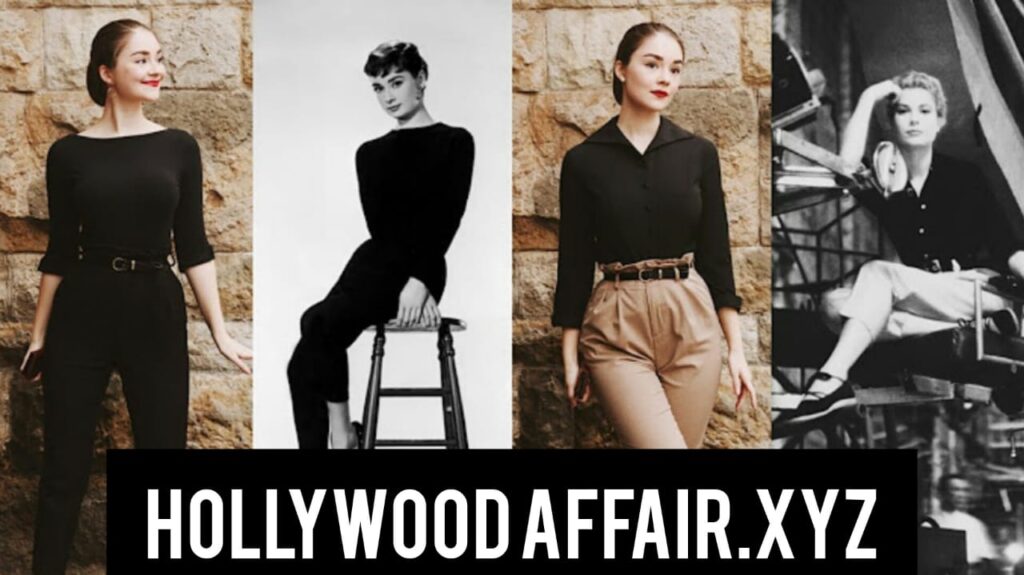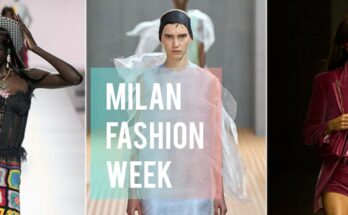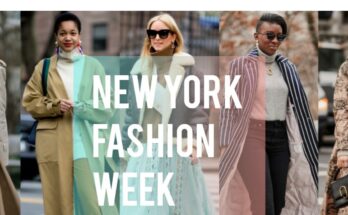Hollywood women’s design is a capable constrain in the worldwide mold industry, always advancing and impacting patterns around the world. Over the a long time, the styles and outfits worn by on-screen characters, particularly on the ruddy carpet and in film, have molded how mold is seen, advancing into a shape of craftsmanship, narrating, and social commentary. From classic Hollywood allure to cutting edge, boundary-pushing plans, Hollywood has been the origin of numerous notorious design moments.
Red Carpet Allure The Part of Grant Appears in Design Evolution
Hollywood’s ruddy carpet occasions, such as the Institute Grants, Brilliant Globes, and the Emmys, are maybe the most noteworthy grandstands of women’s mold universally. These star-studded events permit on-screen characters to wear the most rich and imaginative plans, making ruddy carpet mold an fundamentally portion of pop culture.
Over the a long time, the ruddy carpet has changed from a unimportant preface to grant appears into a design runway where originators compete for acknowledgment, and on-screen characters make strong explanations through their closet choices.
In the early days of Hollywood, ruddy carpet design was around humility and classic tastefulness. On-screen characters would wear bashful outfits that emphasized elegance and downplayed excellence.
Think approximately the excitement of Ancient Hollywood, with stars like Audrey Hepburn and Elegance Kelly epitomizing modernity in basic however rich dresses. These early mold minutes were characterized by long hemlines, delicate outlines, and extravagant textures like silk and glossy silk.
Women’s mold was around depicting ageless magnificence and following to the benchmarks of womanliness predominant amid those decades.
However, as social standards changed, so did mold. The 1960s and 1970s saw performing artists taking more dangers on the ruddy carpet, with bolder colors, prints, and cuts. This was a time of experimentation, and mold got to be a way for on-screen characters to reflect their identities and challenge societal desires.
By the time the 1990s rolled around, ruddy carpet design had completely grasped the thought of singularity and expression. Originators like Versace, Dior, and Alexander McQueen got to be synonymous with the high-fashion exhibition, making perplexing and brave plans that turned the ruddy carpet into a competition for who seem thrust the boundaries of style.
Today, ruddy carpet mold is almost more than fair glamour—it is a effective device for communication. Celebrities regularly utilize their outfits to make social or political explanations. For case, amid the
#MeToo development, numerous on-screen characters wore dark to the Brilliant Globes to express solidarity with the casualties of sexual badgering in the film industry. These minutes of solidarity illustrate how design has gotten to be a stage for activism and mindfulness, going distant past aesthetics.
The ruddy carpet is too a major trendsetter, with looks from these occasions rousing collections from major architects and affecting regular design. It makes minutes that live on in mold history, from famous dresses that proceed to be referenced a long time afterward to patterns that gotten to be omnipresent after their make a big appearance on Hollywood’s greatest night.
Hollywood Symbols and Mold Patterns
Hollywood performing artists have continuously been central to forming mold patterns. From the Brilliant Age of Hollywood to the display day, the closets of driving women have had a noteworthy affect on the world of fashion. Their famous outfits, both on and off the screen, make swell impacts that are felt over design runways and retail stores around the globe.
In the early 20th century, stars like Marlene Dietrich and Katharine Hepburn challenged conventional sexual orientation standards by grasping more gender ambiguous looks. Dietrich’s cherish for custom-made suits and pants, in specific, set her separated as a pioneer for women’s design, appearing that ladies seem be both effective and glitzy.
These performing artists made the thought that mold wasn’t fair around looking beautiful—it was around making a explanation. They utilized their dress to resist societal desires and clear the way for future eras of ladies to grasp a broader run of styles.
Later, in the mid-20th century, symbols like Marilyn Monroe and Elizabeth Taylor made a difference to set the picture of Hollywood allure with their cherish of figure-hugging outfits, lavish hides, and precious stones. These performing artists not as it were made a difference characterize Hollywood mold but moreover turned themselves into brands, with fans energetic to imitate their style.
As time advanced, on-screen characters started taking more imaginative control over their pictures. In the 1990s, stars like Gwyneth Paltrow and Julia Roberts got to be known for their chic, moderate looks, whereas others grasped grunge and edgier mold choices.
The 2000s saw an blast of Hollywood on-screen characters grasping high-fashion couture, with stars like Sarah Jessica Parker and Nicole Kidman reliably pushing the envelope in terms of strong colors, exploratory plans, and high-end originator collaborations.
One of the most interesting perspectives of Hollywood women’s mold is its capacity to cross over into the domain of pop culture.
The mold choices of on-screen characters regularly go past the ruddy carpet and onto the boulevards, affecting how regular ladies dress. Whether it’s a hairdo, a striking color choice, or a sort of outline, on-screen characters play a urgent part in popularizing design trends.
In later a long time, mold influencers like Emma Watson have utilized their stages not as it were to grandstand individual fashion but too to advocate for feasible design. Hollywood symbols proceed to shape fashion developments by championing moral mold hones, demonstrating that women’s mold can be both trendsetting and meaningful.
The Impact of Creators on Hollywood Women’s Fashion
The relationship between Hollywood performing artists and mold architects is one of shared advantage. Originators require the perceivability that comes from having a Hollywood star wear their manifestations on the ruddy carpet, whereas performing artists depend on originators to offer assistance them make an affect amid major occasions. This advantageous relationship has been a key figure in the rise of numerous high-fashion brands.
In the early days of Hollywood, stars regularly worked with neighborhood dressmakers to make their looks for movies and debuts.
Be that as it may, as Hollywood’s impact developed, so did its association to the design world. By the mid-20th century, European creators like Christian Dior, Yves Holy person Laurent, and Coco Chanel started to see the control of having their outfits worn by Hollywood’s tip top. On-screen characters like Audrey Hepburn got to be muses for these architects, making an permanent association between film and fashion.

Designers moreover depend on on-screen
characters to present unused patterns and exploratory looks. The ruddy carpet has gotten to be a testing ground for avant-garde plans, where strong choices are celebrated. Architects know that if a see works on the ruddy carpet, it can lead to broad ubiquity and acceptance.
In later a long time, there has been a move toward more inclusivity in Hollywood mold, with architects making looks that cater to a more extensive run of body sorts, ethnic foundations, and individual styles. This move has permitted for a more prominent differences of mold minutes on the ruddy carpet, reflecting broader societal changes and the continuous advancement of women’s mold in Hollywood.
Road Fashion vs. Couture
While Hollywood ladies are frequently celebrated for their ruddy carpet looks, their road fashion too plays a noteworthy part in forming design patterns. In later a long time, there has been a developing interest with the ordinary mold choices of performing artists, as fans look for to imitate the more available side of celebrity fashion.
Street fashion, in differentiate to the high-glamour world of ruddy carpet couture, offers a see into the individual mold sensibilities of Hollywood’s driving ladies. Whether it’s heading to the exercise center in athleisure, running errands in chic casual wear, or being spotted at air terminals in comfortable travel outfits, the road fashion of performing artists is profoundly influential.
The rise of social media has increased the affect of road fashion. Stages like Instagram and Pinterest have made it simpler for fans to take after the ordinary mold choices of their favorite performing artists, advance obscuring the lines between celebrity design and standard patterns.
On the flip side, Hollywood women’s couture remains an optimistic portion of the mold world. Couture outfits worn by performing artists at grant appears and debuts speak to the apex of extravagance mold. These one-of-a-kind pieces are frequently planned particularly for the on-screen character, exhibiting the extraordinary craftsmanship and imaginativeness of the mold house.
However, the line between road fashion and couture is progressively obscured. Numerous performing artists blend casual pieces with couture embellishments or consolidate high-fashion components into their ordinary looks. This combination has made a more open frame of Hollywood design, where high-end brands like Chanel and Louis Vuitton are worn nearby streetwear staples like denim coats and sneakers.

Sustainability in Hollywood Mold
In later a long time, maintainability has ended up a noteworthy discussion inside the design industry, and Hollywood women’s design is no exemption. With developing mindfulness of the natural affect of the design industry, numerous Hollywood on-screen characters, creators, and beauticians are grasping a more eco-conscious approach to design.
This development is not fair approximately lessening squander, but approximately reshaping the way the design industry works, from the textures utilized to the strategies of generation, and Hollywood is playing a significant part in this transformation.
Hollywood stars have continuously been trendsetters, and presently numerous are utilizing their impact to advance supportability in design. Performing artists like Emma Watson and Cate Blanchett have been vocal advocates for eco-friendly design, frequently choosing to wear feasible plans on the ruddy carpet.
These ladies are making a difference to rethink what it implies to be elegant, Maintainable design in Hollywood can take numerous shapes. One of the most prevalent approaches is the utilize of eco-friendly materials, such as natural cotton, reused polyester, and morally sourced silk. Architects are progressively turning to these materials to make pieces of clothing that are not as it were excellent but too kind to the environment.
Stella McCartney, for case, is a driving figure in maintainable mold, known for her commitment to utilizing cruelty-free and ecologically inviting materials. Her plans have been worn by endless Hollywood on-screen characters, advance pushing the discussion around maintainability into the mainstream.
Another slant in feasible Hollywood mold is the thought of re-wearing or re-purposing pieces of clothing. In a world where on-screen characters are regularly anticipated to wear a modern architect furnish to each ruddy carpet occasion, the choice to re-wear an equip sends a effective message. Cate Blanchett, for case, has been lauded for re-wearing dresses at different grant appears, illustrating that mold can be ageless and that an furnish doesn’t require to be worn as it were once.
In expansion to the materials and hones utilized in making pieces of clothing, maintainability in Hollywood mold too amplifies to the moral treatment of laborers. Numerous creators and on-screen characters are championing reasonable exchange hones and supporting for way better working conditions for those who deliver clothing.
This center on moral design is making a difference to reshape the industry by prioritizing the well-being of article of clothing specialists and guaranteeing that design is not as it were lovely but too socially responsible.
The rise of maintainability in Hollywood design has too been upheld by a number of activities and organizations. The Green Carpet Challenge, established by Livia Firth, empowers celebrities to wear maintainable design on the ruddy carpet. This activity has been grasped by various Hollywood stars, making a difference to raise mindfulness almost the natural and social affect of the design industry.
Social media has played a basic part in spreading the message of supportability in Hollywood design. Stages like Instagram and Twitter permit performing artists to share their eco-friendly design choices with millions of devotees, making supportability a more open and relatable concept for fans.
By utilizing their stages to advance feasible mold, Hollywood performing artists are not as it were affecting their supporters but moreover pushing the mold industry to receive more feasible practices.
In conclusion, maintainability has gotten to be an basic portion of Hollywood women’s design, with numerous on-screen characters and creators driving the charge in advancing eco-friendly and moral hones.
This present day approach to fashion is around more than fair looking good—it’s almost making mold choices that are kind to the planet and to the individuals who make the dress. As maintainability proceeds to pick up force in Hollywood, it is likely to rouse broader changes in the mold industry, forming the future of mold for a long time to come.



